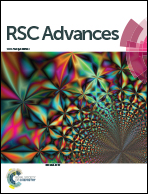Modified recycled concrete aggregates for asphalt mixture using microbial calcite precipitation
Abstract
Using recycled concrete aggregate (RCA) in an asphalt mixture has many economic and environmental benefits for our society. However, due to the poor adhesion of RCA to asphalt binder, the replacement of normal aggregate with RCA leads to a reduction in the properties of asphalt mixture. This study presents a new approach to overcome this deficiency by treating RCA with microbial carbonate precipitation to develop chemical bonds between RCA and asphalt binder. This study first investigates the effect of this surface treatment on the properties of RCA. The experimental results showed that the capillary water absorption and porosity of the treated-RCA could be reduced by 86.5% and 32%, respectively, as compared to those of the untreated-RCA. In addition, this study investigates the influence of this surface treatment on the interfacial behavior of RCA to asphalt binder by means of standard boiling test and direct tension test. According to the test results, the adhesion behavior of the treated-RCA to asphalt binder could be improved by 2 grades as compared to the asphalt mixture with untreated-RCA. Moreover, the bonding strength of treated-RCA to asphalt binder was also improved by 55%. The formation of chemical affinity between treated-RCA and asphalt binder, as shown in FTIR spectra, is the explanation for the enhancement in the bonding strength and water susceptibility for the treated-RCA–asphalt mixture.


 Please wait while we load your content...
Please wait while we load your content...